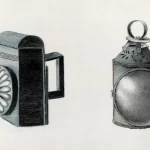Medtronic, Inc. vs. Teleflex Life Sciences Ltd. – A Strategic Approach to Patent Litigation
- November 27, 2023
- By Sarita Thomas
- Read 3 minutes
Federal Circuit case of Medtronic, Inc. vs. Teleflex Life Sciences Ltd. – a compelling narrative of strategic decision-making and procedural nuances in patent litigation. This detailed analysis offers patent experts and attorneys key insights into the intricacies of appellate strategy, the importance of comprehensive briefing, and the impact of procedural adherence in shaping legal outcomes. A must-read for professionals seeking to deepen their understanding of advanced patent litigation tactics.
Strategic decisions can often be the determining factor between success and failure. The recent Federal Circuit case of Medtronic, Inc., et al. v. Teleflex Life Sciences Ltd. (Nos. 2022-1721, -1722) serves as an exemplary case study in this regard. This article dissects the case, highlighting key takeaways for patent experts and attorneys.
Background
Medtronic filed two Inter Partes Review (IPR) petitions challenging certain claims in a patent owned by Teleflex. The central contention revolved around the “Itou” reference, which Medtronic argued qualified as prior art under pre-AIA § 102(e). Teleflex countered this by asserting that their invention was conceived before Itou’s critical date and was either actually reduced to practice or diligently pursued until its constructive reduction to practice.
Board’s Decision and Federal Circuit Appeal
The Patent Trial and Appeal Board sided with Teleflex, ruling that Itou did not qualify as prior art. Unsatisfied, Medtronic escalated the matter to the Federal Circuit. However, during the appeal, the landscape changed as the Federal Circuit issued several related decisions which rendered many of the arguments moot, except for the issue of Teleflex’s diligence.
The Crucial Issue of Diligence
The question of diligence became the focal point of the appeal. The Federal Circuit found that Medtronic waived its arguments on this issue. Medtronic’s strategic choice in its opening appeal brief to condition its argument on the outcome of a related IPR’s diligence holding backfired. The related appeal did not vacate the Board’s diligence holding, meaning Medtronic’s condition precedent was unmet.
Strategic Missteps and Their Consequences
Medtronic’s attempt to salvage its position by urging the Federal Circuit to consider arguments made in a separate appeal was denied. This refusal was grounded in the principles of “improper incorporation by reference” and adherence to word limits as per Federal Rule of Appellate Procedure 28(a)(6). The Federal Circuit’s decision highlighted the repercussions of Medtronic’s strategic choices in briefing, emphasizing that these decisions cannot be undone at a later stage.
Implications and Lessons Learned
- The Importance of Comprehensive Briefing: Medtronic’s case underscores the importance of anticipating and addressing all relevant issues in the initial briefing. This case serves as a reminder that leaving critical arguments conditional or unaddressed can lead to waiver.
- Strategic Decision-making in Appeals: The outcome illustrates the need for a holistic strategy in appellate litigation. While it’s crucial to consider potential outcomes of related cases, relying heavily on them can be risky.
- Adherence to Procedural Rules: The case also reinforces the importance of adhering to procedural rules. Attempts to circumvent word limits or incorporate arguments by reference can backfire, as seen here.
- Precedent and Related Decisions: Understanding and adapting to the evolving legal landscape, as shaped by related decisions, is crucial for effective litigation strategy.
Key takeaways for US litigation attorneys and patent analysts
The Federal Circuit’s ruling in Medtronic, Inc. vs. Teleflex Life Sciences Ltd. not only affirmed the Board’s finding but also served as a nuanced lesson in strategic litigation. For patent practitioners, this case is a stark reminder of the complexities and nuances in patent litigation strategy. It highlights the need for meticulous planning, comprehensive argumentation, and adaptability to the dynamic nature of legal precedents and procedural rules.
As we continue to navigate the world of patent law, cases like these provide valuable insights into the art of legal strategy, serving as both a guide and a cautionary tale for seasoned patent attorneys and experts.
View opinion here.
Sarita Thomas
Latest Blogs
Blog Categories
- Intellectual Property (IP) Strategy (84)
- Intellectual Property Asset Management (IPAM) (17)
- IP Monetization (4)
- IP News (7)
- Patent Drafting (2)
- Patent Litigation (6)
- Patent Prosecution (8)
- Patenting (18)









No comment yet, add your voice below!